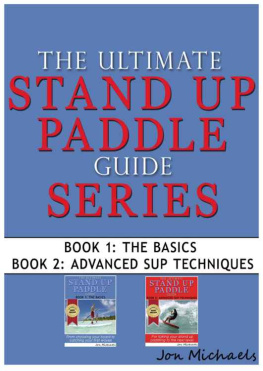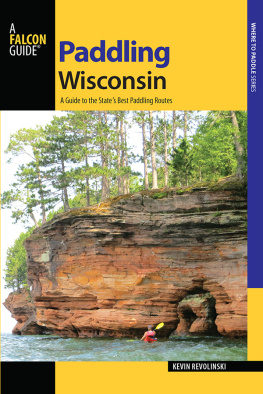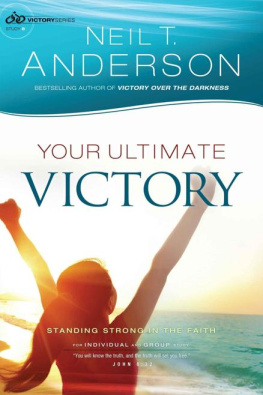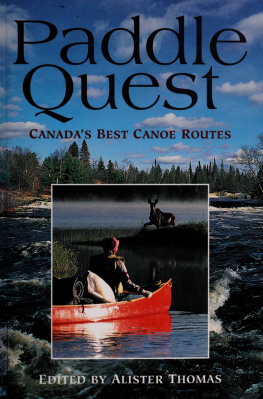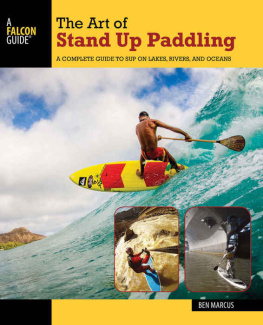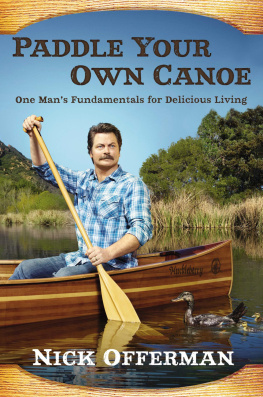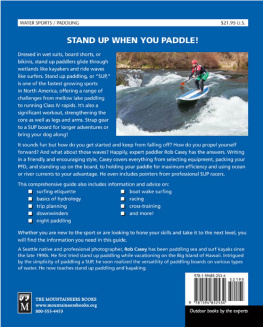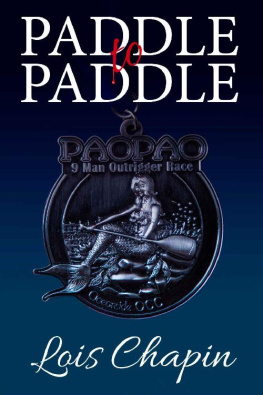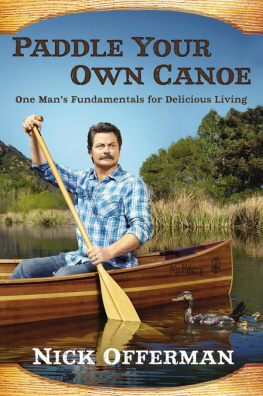Jon Michaels - The Ultimate Stand Up Paddle Guide Series - Book 1 & 2 (Stand Up Paddle Guides 3)
Here you can read online Jon Michaels - The Ultimate Stand Up Paddle Guide Series - Book 1 & 2 (Stand Up Paddle Guides 3) full text of the book (entire story) in english for free. Download pdf and epub, get meaning, cover and reviews about this ebook. year: 2012, publisher: JBET Publishing, genre: Home and family. Description of the work, (preface) as well as reviews are available. Best literature library LitArk.com created for fans of good reading and offers a wide selection of genres:
Romance novel
Science fiction
Adventure
Detective
Science
History
Home and family
Prose
Art
Politics
Computer
Non-fiction
Religion
Business
Children
Humor
Choose a favorite category and find really read worthwhile books. Enjoy immersion in the world of imagination, feel the emotions of the characters or learn something new for yourself, make an fascinating discovery.
- Book:The Ultimate Stand Up Paddle Guide Series - Book 1 & 2 (Stand Up Paddle Guides 3)
- Author:
- Publisher:JBET Publishing
- Genre:
- Year:2012
- Rating:3 / 5
- Favourites:Add to favourites
- Your mark:
- 60
- 1
- 2
- 3
- 4
- 5
The Ultimate Stand Up Paddle Guide Series - Book 1 & 2 (Stand Up Paddle Guides 3): summary, description and annotation
We offer to read an annotation, description, summary or preface (depends on what the author of the book "The Ultimate Stand Up Paddle Guide Series - Book 1 & 2 (Stand Up Paddle Guides 3)" wrote himself). If you haven't found the necessary information about the book — write in the comments, we will try to find it.
Jon Michaels: author's other books
Who wrote The Ultimate Stand Up Paddle Guide Series - Book 1 & 2 (Stand Up Paddle Guides 3)? Find out the surname, the name of the author of the book and a list of all author's works by series.
The Ultimate Stand Up Paddle Guide Series - Book 1 & 2 (Stand Up Paddle Guides 3) — read online for free the complete book (whole text) full work
Below is the text of the book, divided by pages. System saving the place of the last page read, allows you to conveniently read the book "The Ultimate Stand Up Paddle Guide Series - Book 1 & 2 (Stand Up Paddle Guides 3)" online for free, without having to search again every time where you left off. Put a bookmark, and you can go to the page where you finished reading at any time.
Font size:
Interval:
Bookmark:
Table of Contents

The Ultimate Stand Up Paddle Guide
Book 1: The Basics
By Jon Michaels
JBET Publishing
Copyright 2012 Jon Michaels
All rights reserved
First Edition 2012
No part of this book may be reproduced in any form, or by any electronic, mechanical, or any other means, without the express written consent of the publisher.
Copy Editor: Joanne Lowen
Cover Design: Carmel Hooper
Also by Jon Michaels:
THE ULIMATE STAND UP PADDLE GUIDE
BOOK 2: ADVANCED SUP TECHNIQUES
For taking your paddling to the next level
BOOK I
INTRODUCTION

There may be a thousand and one reasons why you have been drawn towards stand up paddle boarding or SUP for short. It could be because you have watched others do it and fancied having a go yourself, maybe you are a keen sports person looking to cross train, or perhaps just the opposite, a non sporty type looking to build your fitness levels in a fun way. It could just be you are a surfer fed up with sitting it out during the long flat or small wave spells while the paddle boarders are still out there doing their thing.
Whatever your reasons, should you take the plunge, you will be part of a global surge that seems to have suddenly woken up and asked what is this paddle boarding? Who does it and where does it come from? Could Ido it? The answers to the first 3 questions you will find in this text, while the answer to the final question is a very resounding YES ABSOLUTELY!
The main thing that surprises (and pleases) beginners the most is the accelerated learning curve, particularly when compared to other water/ocean sports. You can start from absolute zero, having never previously been involved in sports of any kind and quickly accomplish competent skill levels.
Some SUPers describe the activity as the most peaceful and meditative thing they have ever done, while others say it gives them a great adrenalin rush. What you get from it all depends on how and where you use your SUP board.
WHAT YOU CAN DO ON A SUP BOARD
So, an SUP board can only be ridden in the surf right? WRONG! There are many reasons why SUP has become so popular and emerged with its own identity one of these being the great range of conditions and environments in which a SUP board can be used. These are:
For surfing waves big or small.
For cruising around on totally flat water surfaces, short or long distance.
For use in white water conditions, shooting rapids, weir drops etc.
For racing, sprint and endurance.
For any combination of these.
This means that a SUP board can be used on any body of water:
The ocean when there are waves.
The ocean when there are no waves.
Lakes.
Rivers, from high velocity white water, to wide and meandering.
Estuaries and river mouths (half ocean environment).
Canals.
Anything else you can find.
Most who SUP board do it for its own sake but there are those who use it either partially or solely as a relaxing, non-motorised means of transportation for accessing hidden coves and beaches or getting them out to a prime snorkelling or fishing spot, for example.
THE ROOTS OF SUP
It is assumed by many people, surfers included, that paddle boarding has the same centuries old roots as conventional surfing but it is probably a far, far younger sport. As a derivative of surfing it could of course be argued that the roots of surfing are the roots of paddle boarding but otherwise nobody knows for sure whether the ancient Polynesians were paddling their surfboards or just their canoes. One thing for certain is that the 20 th century re-emergence (or emergence depending on what you believe) of SUP owes its roots to rather more mercenary motives than the regally romantic history associated with conventional surfing.
Beginning in the 50s but peaking more in the 60s, rich American tourists would unload by the boatload throughout the Hawaiian Islands, and more specifically at Waikiki on Oahu. It was inevitable that these tourists would want to try surfing after watching the locals perform, so surf lessons, surfboard rental, and all the trappings were the result. In fact they were, most likely, the worlds very first surf schools.
No one is quite sure when or exactly why the Waikiki boys started using wooden outrigger canoe paddles to power their heavy long boards, generally far bigger than the long boards of today. Some say it is because being up high allowed the surf instructor to keep his eye on his trainees and to watch for oncoming wave sets. The more generally accepted story is that the American would-be surfers wanted some evidence of their exploits, and as such there was a demand for photographs. There was no such thing as water-proof housing for cameras back in the day so paddling a long board from standing became a way to meet the tourists needs without wrecking cameras. No one truly knows who came up with the idea first.
History tells us that a few Waikiki boys, known as The Beach Boys, carried on stand up paddling and there has always been a few individuals doing so ever since then, but otherwise the first seeds of SUP went into hibernation and were not to grow into anything further for a few decades.
Around 2000 several big names in the world of surfing started stand up paddle boarding, although most of the accreditation for this is given to Laird Hamilton and Dave Kalama both giant wave tow-in surfers and surf design and equipment innovators. Around the same time, Hawaiian American surfer Rick Thomas brought stand up paddle boarding to the US mainland.
Since the early 2000s SUP popularity has grown with an ever-rising curve and at an explosive rate. Today, an entire industry revolves around it and although continuing to have strong surfing connections is now considered a completely separate sport in its own right, partly due to its diversification. All a far cry from only a few years ago when Rick Thomas was using a long board surfboard for SUP and persuaded a friend to make him a paddle more suited to what he was trying to do because the only other option was a canoe paddle.
The information contained in these guides will give you a comprehensive introduction on what you need to get started in paddle boarding, gear and kit requirements and explanations, where you can go and general safety, as well as introducing you to the first strokes, turns and techniques you will need. In the course of this, most of the questions that you may have as a complete beginner or just started novice will be answered.
CHAPTER I - THE GEAR
ANATOMY OF THE SUP BOARD

Deck
Describes the top of the board (usually flat) - the part you stand on.
Bottom
The typically flat under surface that sits on the water. There are variations and deviations in bottom shapes which will enhance such things as speed and manoeuvrability for performance boards but they are typically less stable.
Nose
The front end of the board. It varies in shape depending on whether the board is a surf specific model, a tourer, racer, or an all rounder.
Tail
The rear end of the board. There are different tail shapes which help determine the type of SUPing the board is suitable for and the conditions in which it will perform to an optimum. The greatest tail shape variations occur in SUP surfboards where the design affects speed, manoeuvrability, and how the board will hold on the water in a wave.
Next pageFont size:
Interval:
Bookmark:
Similar books «The Ultimate Stand Up Paddle Guide Series - Book 1 & 2 (Stand Up Paddle Guides 3)»
Look at similar books to The Ultimate Stand Up Paddle Guide Series - Book 1 & 2 (Stand Up Paddle Guides 3). We have selected literature similar in name and meaning in the hope of providing readers with more options to find new, interesting, not yet read works.
Discussion, reviews of the book The Ultimate Stand Up Paddle Guide Series - Book 1 & 2 (Stand Up Paddle Guides 3) and just readers' own opinions. Leave your comments, write what you think about the work, its meaning or the main characters. Specify what exactly you liked and what you didn't like, and why you think so.

